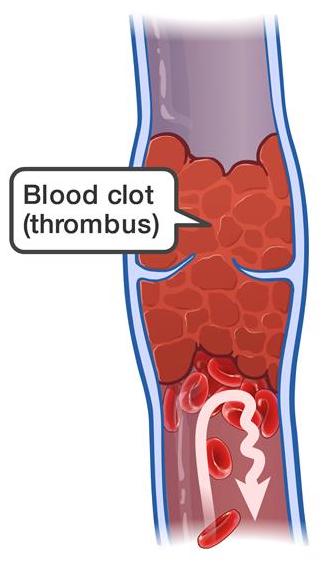
If blood moves too slowly through your veins, it can cause a clump of blood cells called a clot. When a blood clot forms in a vein deep inside your body, it causes what doctors call deep vein thrombosis (DVT). This is most likely to happen in your lower leg, thigh, or pelvis. But it can occur in other parts of your body, too.
DVT can lead to major health problems. In some cases, it can be fatal. That’s why if you think you have one, you must see a doctor right away.
DVT symptoms can be hard to find and often go unnoticed. So it’s hard to estimate the number of diagnoses . But it’s thought that about 8 in every 10,000 people get DVT every year. And lower-leg DVT happens in every 1 in 1,000 people. But these numbers actually could be higher.
The causes of DVT include things that keep blood from:
- Flowing through your leg, thigh, or pelvis
- Clotting correctly
This usually happens as a result of damage to one of your veins due to:
- Surgery
- Inflammation
- Infection
- Injury
Not everyone with DVT shows symptoms. But you might notice any of the following:
Leg or arm swelling that comes on without warning
Pain or soreness when you stand or walk
Warmth in the area that hurts
Enlarged veins
Skin that looks red or blue
If a blood clot breaks free and moves through your bloodstream, it can get stuck in a blood vessel of your lung. Doctors call this a pulmonary embolism, or PE. It can be fatal.
Some people don’t know they have DVT until this happens. Signs of PE include:
Shortness of breath
Chest pain that’s worse when you take a deep breath
Coughing up blood
Higher heart rate
Your doctor will want to stop the blood clot from getting bigger or breaking off and heading toward your lungs. They’ll also want to cut your chances of getting another DVT.
This can be done in one of three ways:
Medications for DVT
Blood thinners are the most common medications used to treat DVT. They cut your blood’s ability to clot. You may need to take them for 6 months. If your symptoms are severe or your clot is very large, your doctor may give you a strong medicine to dissolve it. These medications, called thrombolytics, have serious side effects like sudden bleeding. That’s why they’re not prescribed very often.
Procedure for DVT
Inferior vena cava (IVC) filter. If you can’t take a blood thinner or if one doesn’t help, your doctor may insert a small, cone-shaped filter inside your inferior vena cava. That’s the largest vein in your body. The filter can catch a large clot before it reaches your lungs.
Home remedies for DVT
Compression stockings. These special socks are very tight at the ankle and get looser as they reach your knee. This pressure prevents blood from pooling in your veins. You can buy some types at the drugstore. But your doctor might prescribe a stronger version that an expert can fit for you.
